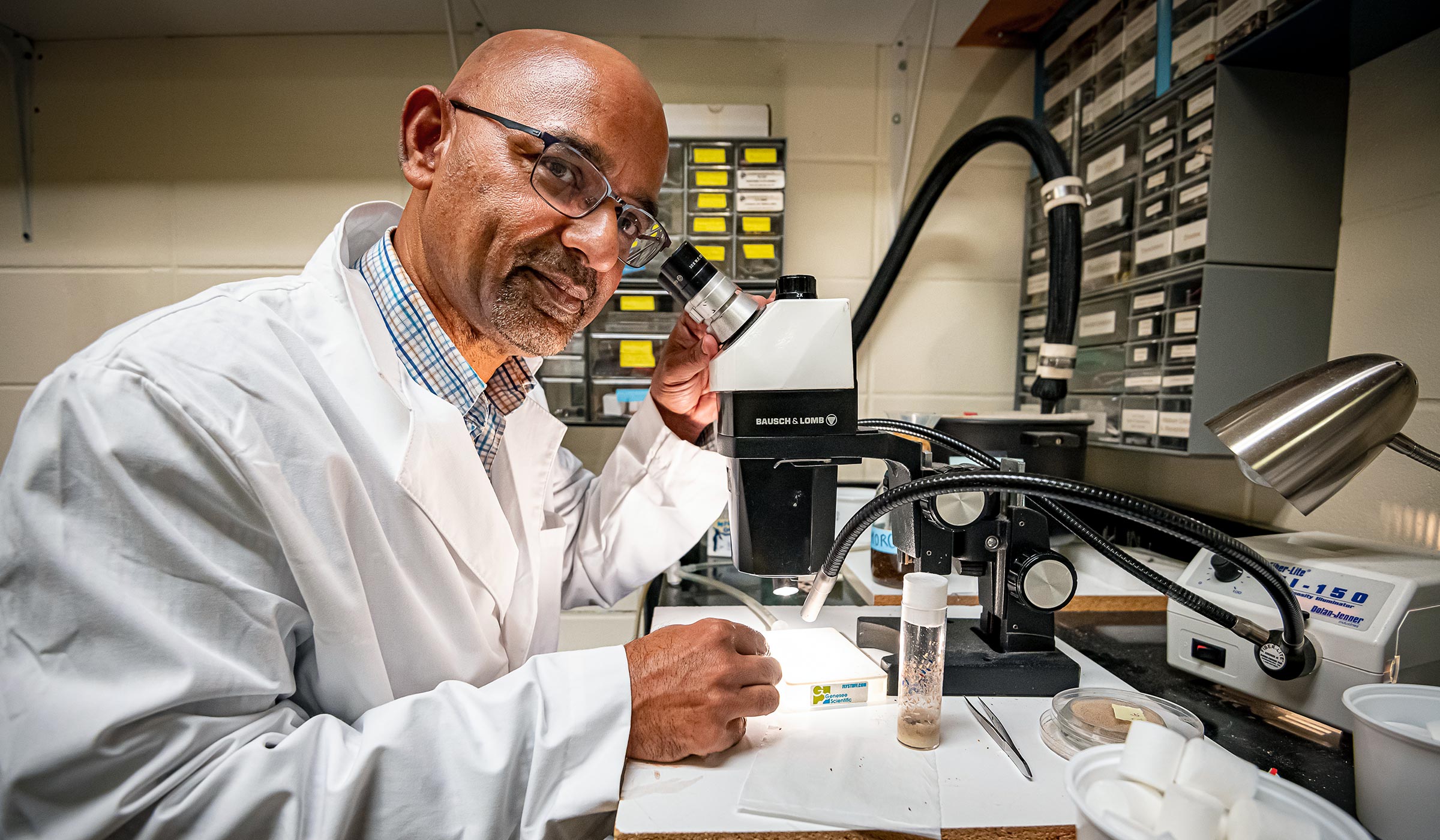Natraj Krishnan

For Natraj Krishnan, it’s all about time—whether that’s teaching MSU freshmen about the importance of a good night’s sleep or studying the common fruit fly to better understand how an organism’s circadian clock impacts its health.
Krishnan, an associate professor in the Department of Biochemistry, Molecular Biology, Entomology and Plant Pathology, describes his journey to MSU as a series of fortunate coincidences. He began that journey in India, working for the country’s Ministry of Textiles and contributing to the vitality of India’s $266 billion silkworm industry by identifying pathogens and collaborating with geneticists to breed disease-resistant silkworms.
“Silkworms are reared by farmers in India, China, Japan and elsewhere who harvest the silk produced from cocoons. India is unique in that it produces all five types of commercial silk for the textile industry. Farms can raise up to a million silkworms at once and a major problem is the prevalence of diseases, which results in catastrophic crop loss if preventive measures are not implemented during rearing,” Krishnan said.
His work studying silkworms led him to research in the Netherlands, then the Czech Republic to study how greater wax moth larvae use reactive oxygen, known as an oxidative burst, in their blood cells to defend against infection. From there, he moved on to the Institute of Entomology at the Czech Academy of Sciences exploring how insects combat oxidative stress in digestion.
A chance meeting at a conference in Poland led Krishnan to traverse the globe once more—this time to Oregon State University in Corvallis—to study how the fruit fly’s circadian clock regulates response to oxidative stress during aging.
“Working on the fruit fly opened up a whole new world of biomedical research. I studied how disruption of clock genes resulted in shortened lifespan and increased susceptibility to stress. I also demonstrated how disruption of some core clock genes could result in symptoms of neurodegeneration,” Krishan said.
In fact, Krishnan said, the study of fruit flies has resulted in six Nobel Prizes in Physiology or Medicine, a mighty feat for an insect that is barely an eighth of an inch wide.
When a position for an insect physiologist opened up at MSU in 2011, Krishnan leapt at the opportunity where, for the last decade, he has continued to study the underestimated fly—currently focused on processes that impact dopamine, proteostasis, cellular growth and more.
“The fruit fly has proven tremendously valuable as a model organism, enabling many major scientific discoveries in all spheres of biology ranging from development and differentiation to serving as a model for a host of human diseases. The plethora of genetic tools available in the insect allows for exquisite targeted manipulation of the genome and due to its relatively short lifespan, complex questions of brain function can be addressed more rapidly than in other model organisms,” he said.
Krishnan also trains the doctors, veterinarians and neurophysiologists of tomorrow while teaching undergrads about the importance of a little shut-eye. He teaches several undergraduate and graduate courses focused on biochemistry, protein methods, physiology, genetics, toxicology and more. His first-year experience course for incoming MSU freshmen is called Nature’s Timepiece.
“This course essentially covers exciting discoveries related to biological clocks across all organisms and our sleep-wake cycles and their importance in health and disease. Using the fruit fly, I can show how disrupting their circadian clock leads to stress and impaired function, while the students learn how a functioning circadian clock is necessary for a functioning individual and that cumulative disruptions can lead to disease,” Krishnan said.
Time rolls on for Krishnan—who considers empowering the next generation of scientists the most impactful and rewarding aspect of his job—and he’s most excited to see how his students answer the big questions of tomorrow.
“How do we make sure that our students are equipped to deal with the challenges of the next decade? We must encourage them and give them the necessary skillset, so they have the tools to address the scientific questions on the horizon,” he said.